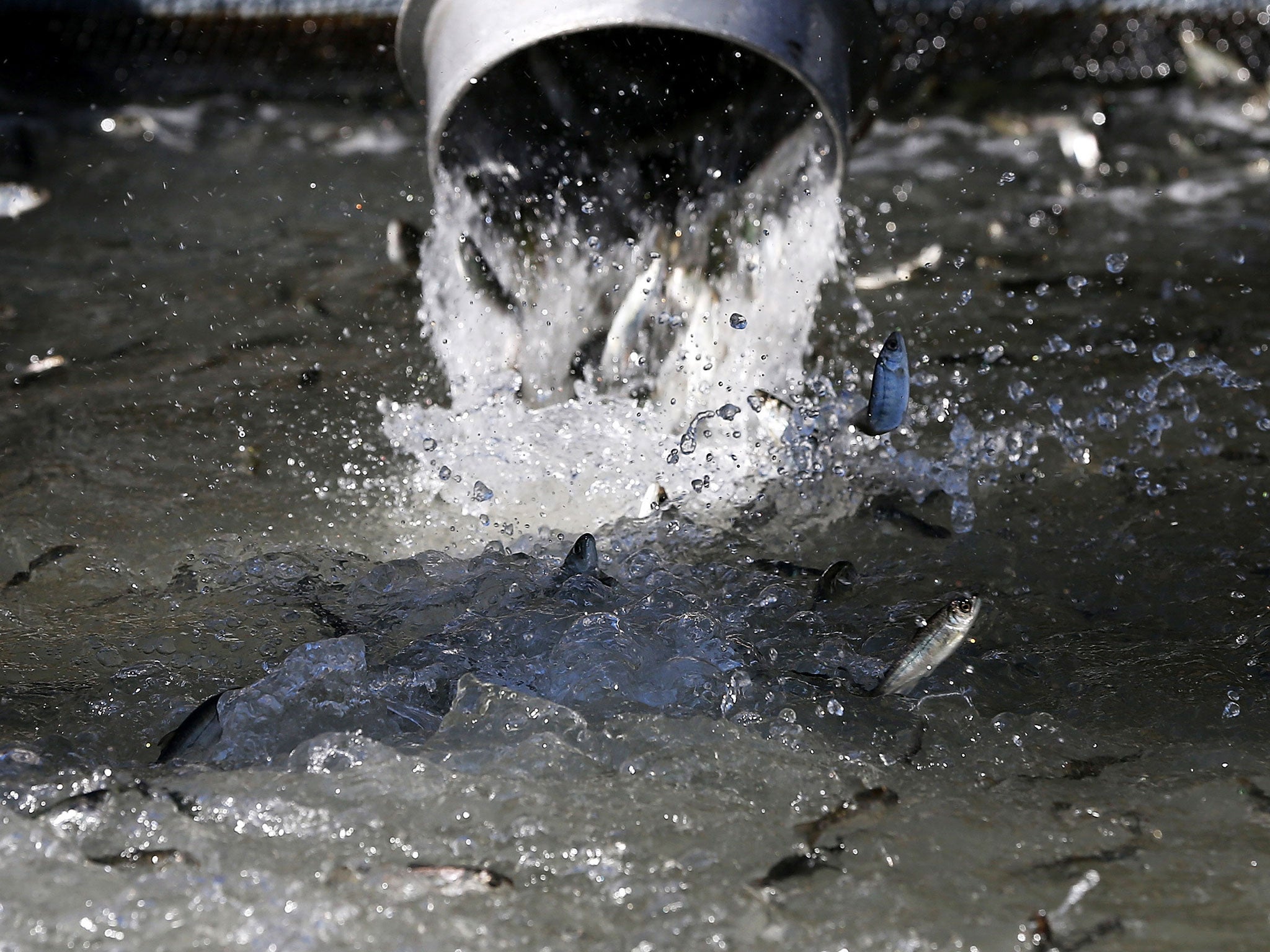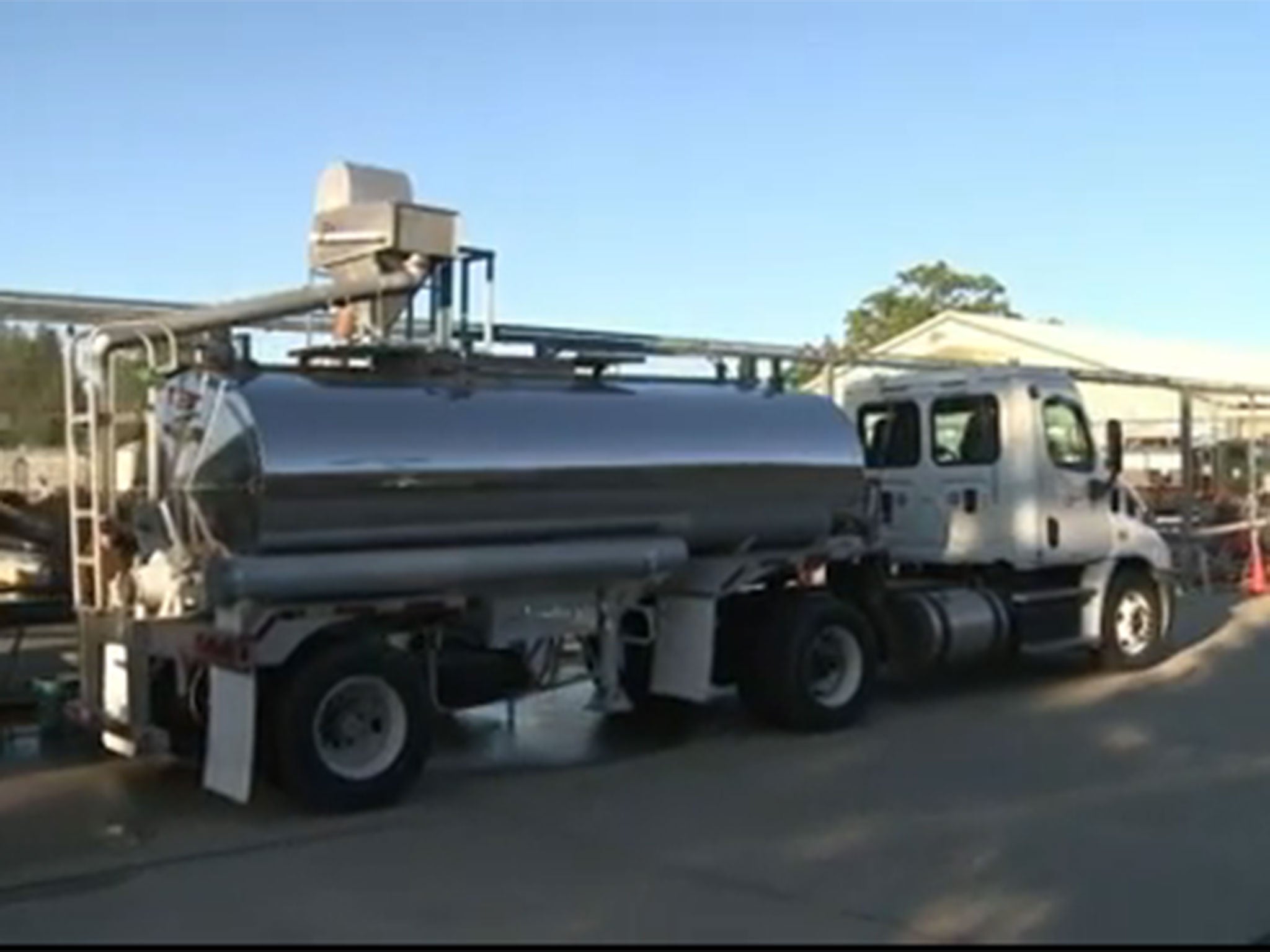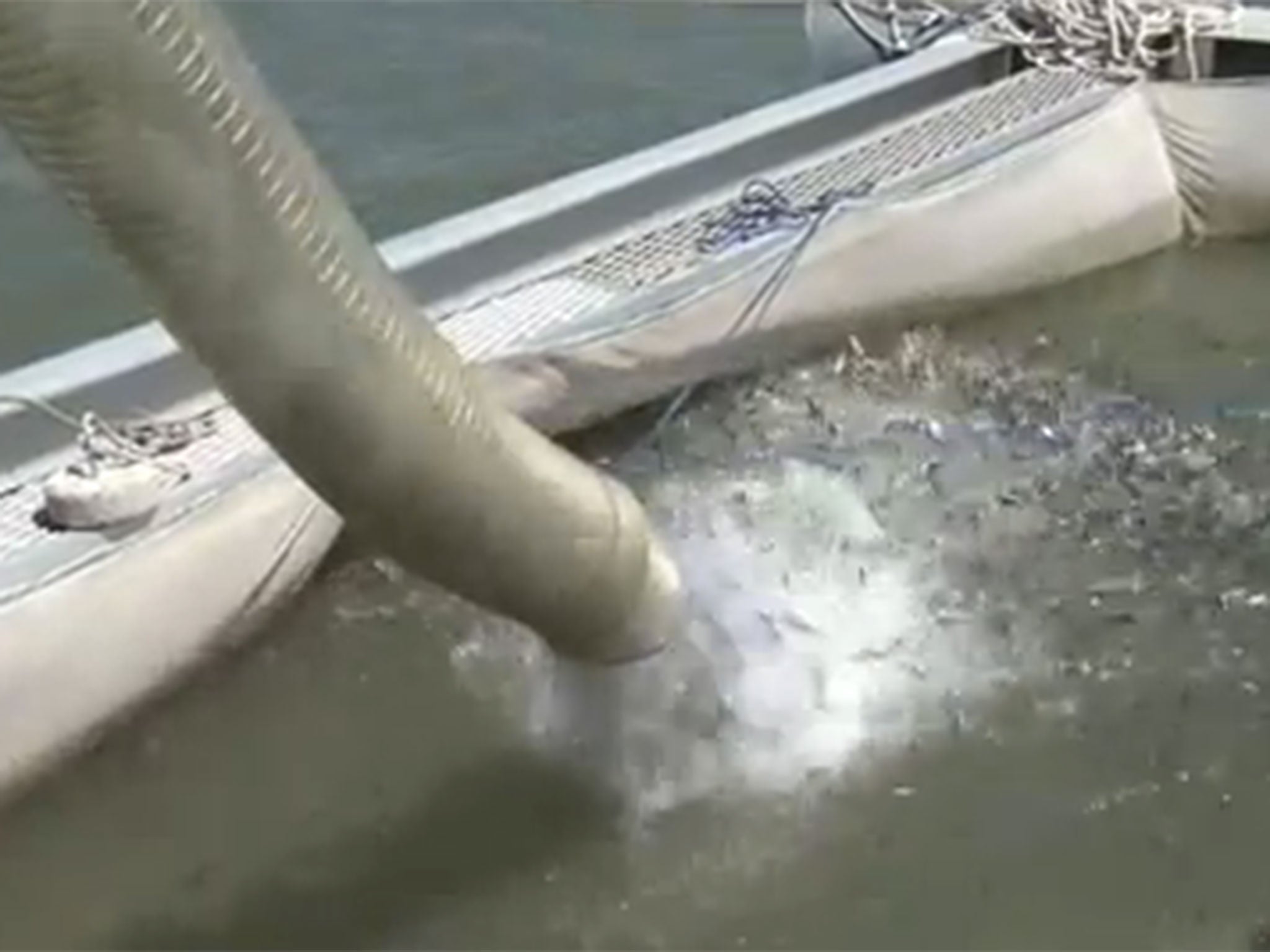Droughts lead to California's biggest salmon hatchery driving millions of fish to the coast
More than 13 million fish have been transported to the San Francisco bay

Your support helps us to tell the story
From reproductive rights to climate change to Big Tech, The Independent is on the ground when the story is developing. Whether it's investigating the financials of Elon Musk's pro-Trump PAC or producing our latest documentary, 'The A Word', which shines a light on the American women fighting for reproductive rights, we know how important it is to parse out the facts from the messaging.
At such a critical moment in US history, we need reporters on the ground. Your donation allows us to keep sending journalists to speak to both sides of the story.
The Independent is trusted by Americans across the entire political spectrum. And unlike many other quality news outlets, we choose not to lock Americans out of our reporting and analysis with paywalls. We believe quality journalism should be available to everyone, paid for by those who can afford it.
Your support makes all the difference.Pacific salmon are known for their great migrations.
Moving across continents, they can travel thousands of miles to find the ideal waters to breed in.
Usually they do this by swimming, but recently salmon in California have used transport to ensure their annual migration is completed.
However, this year instead of taking the three week journey to the coast, salmon are loaded onto a lorry and driven for four hours to the San Francisco Bay.
According to Brett Galyean, this is largely down to the low water levels along the Sacramento River.
He said: “If we release them out into they would experience maybe low water and warmer water, which would provide stress to them and give predators a better chance at eating them. ”
To transport the salmon, the fish are sucked up 60,000 at a time into the massive tanks where they are held in cold water and driven to the San Francisco Bay.

It is here that they are released into the bay, where after being held for a couple of hours are set free and sent to find their way to the Pacific Ocean.
The salmon fishing industry in the US is said to be worth billions of dollars and provide a lifeline for certain communities along the migration routes.

Steve Martano, a worker for the Fish and Wildlife Service said: “This is not our usual procedures but this is the best we can do under the circumstances.
“At least now we will get some kind of ocean harvest and some kind of benefit to the ocean fishery.”
Join our commenting forum
Join thought-provoking conversations, follow other Independent readers and see their replies
Comments